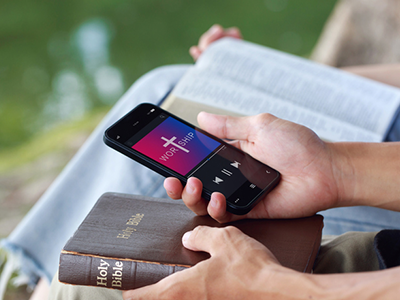Boosting Online Church Engagement: Tips for Stronger Connections and Community
Gone are the days when church engagement was limited to Sunday mornings and a quick handshake at the door. Today, it’s a 24/7 opportunity to connect, inspire, and build community. Whether it’s a livestreamed sermon, a Facebook post celebrating a new member, or a virtual prayer group on Wednesday night, digital tools are the secret sauce for keeping your congregation engaged throughout the week.
But let’s be real—building an online church community that feels authentic and welcoming doesn’t happen by accident. It takes creativity, effort, and a little humor (because nothing breaks the ice like a good “Dad joke” in a small group). Below, we’ll show you how to create meaningful connections and boost online engagement with tips that are practical, effective, and maybe even a little fun.
Sustainable Strategies for Online Church Engagement
Develop a Blended Engagement Plan
Think of blended engagement as the peanut butter and jelly of church community building—it’s better together. By combining the warmth of in-person gatherings with the accessibility of digital tools, you can create a community where everyone feels like they belong, even if they’re halfway across the country (or just stuck at home with a sick kid).
For example, live stream your Sunday service so members who can’t make it in person don’t feel left out. Then, follow up during the week with a quick email or social media post highlighting the key message. This way, your congregation stays connected, even if life gets in the way.
And don’t forget to keep it consistent. Familiar rhythms, like a midweek devotional email or a regular prayer live stream, help build trust and make members feel like they’re part of a community that’s always there for them—kind of like that one friend who never forgets your birthday.
Quick Win: Host a “coffee and chat” Zoom session once a month. It’s informal, fun, and a great way for members to connect between services. Bonus points if you include icebreaker questions like, “If you could ask Moses one question, what would it be?”
Consistent, Reliable Communication
Good communication is the backbone of any strong community—and your church is no exception. Without clear, regular updates, even the most devoted members might miss an event or feel out of the loop.
Start by making communication consistent. A weekly newsletter or a well-timed text message can go a long way in keeping everyone informed. But don’t just stop at “here’s what’s happening.” Add a little personality. For example, include a quick reflection from your pastor, a funny behind-the-scenes photo from Sunday service prep, or a sneak peek at next week’s worship setlist.
The goal is to make your updates something people actually want to read—not just another email they scroll past while waiting in line for coffee.
Using Live Streaming and Digital Platforms to Engage Your Congregation
Live Streaming Done Right
Livestreaming has become a staple for many churches, but there’s a difference between broadcasting and engaging. Sure, you can point a camera at the pulpit and call it a day, but why not make it fun and interactive?
Start by welcoming your online audience directly. A simple “We’re so glad you’re here, whether you’re in the room or on your couch in pajamas” goes a long way in making people feel included.
Then, think about ways to make the experience more interactive. Encourage viewers to share prayer requests in the chat, host a live Q&A session after the sermon, or even include a quick poll during announcements. Think of it as a conversation, not just a broadcast.
Pro Tip: Add a little humor to your livestream. “If you’re watching online, give us a thumbs up in the chat—or a praise hands emoji if you just refilled your coffee.” It’s the little things that make it feel personal.
Offer Diverse Presentation Formats
No one likes monotony, so shake things up with a variety of formats. Instead of the same sermon style every week, try sprinkling in interviews, panel discussions, or member testimonials. These changes not only keep things fresh but also show the diversity and richness of your church community.
Visuals are another great way to keep viewers engaged. Add slides with key scripture references, short video clips that tie into your message, or even a countdown timer before the service to build anticipation.
Optimizing Your Church Website for Engagement
Make Your Website User-Friendly
Your website is your church’s digital front door—so make sure it’s inviting and easy to navigate. Think of it this way: if someone has to spend more time looking for service times than they do reading Genesis 1, your site needs a redesign.
Make key information like event details, sermon replays, and donation options easy to find. And don’t forget about mobile users, your site should look just as good on a phone as it does on a laptop.
Want to take it a step further? Add personalized next steps, like “Sign Up for a Small Group” or “Join Us for Prayer Night.” It’s a subtle way to guide visitors deeper into the life of your church.
Create a Central Hub of Resources
Your website should also serve as a one-stop shop for all things church-related. From sermon replays and volunteer sign-up forms to event updates and educational opportunities, having everything in one place saves your members from having to dig through old emails or scroll endlessly on social media.
But here’s the catch: it has to stay current. If your “Upcoming Events” section still lists the Christmas play…and it’s June, you’re not giving people much reason to come back.
Effective Use of Social Media for Church Engagement
Foster Authentic Interactions
Social media is where your church can let its personality shine. Share real moments from your community—whether it’s a behind-the-scenes look at service prep, photos from a volunteer project, or a funny moment during youth group.
Authenticity is key here. People want to see the heart of your church, not just polished graphics and announcements.
Boost Engagment with User-Generated Content
Get your members involved by inviting them to share their own stories and experiences. Start a hashtag for an upcoming event or encourage members to post their favorite scripture and tag your church. When people see their contributions highlighted, it deepens their sense of connection.
Building Virtual Communities and Small Groups
Host Virtual Small Groups
Virtual small groups are a fantastic way to bring people together, even when they can’t meet in person. Keep them fun and interactive with icebreakers, engaging discussion topics, and plenty of room for laughter.
For example, start each session with a light question like, “What’s one thing God has taught you this week?” It’s an easy way to get the conversation flowing and set the tone for a meaningful discussion.
Facilitate Online Discussions
Want to keep the conversation going throughout the week? Online forums or private social media groups are your best friend. Whether it’s sharing prayer requests, diving deeper into Sunday’s sermon, or just checking in with one another, these spaces help keep members connected from Monday through Saturday.
The Role of High-Speed Internet in Online Church Engagement
A slow internet connection can put a wrench in even the best engagement strategies. High-speed, reliable internet is essential; fiber internet, in particular, provides the speed, reliability, and bandwidth your church needs to support its digital tools and initiatives. The result? A frustration-free experience for an actively engaged congregation.

Creating Meaningful Connections
Engaging your church online isn’t about chasing the newest tech trends—it’s about building real, lasting connections. By combining in-person gatherings with thoughtful digital experiences, staying consistent in your communication, and using tools like livestreams and social media with purpose, you can create a more connected and vibrant congregation. Don’t worry about tackling everything at once—start small. Pick one or two strategies to try, and see how they make a difference in your community.
For more insights, explore how the right technology can enhance worship services, strengthen community outreach, and support your church’s digital engagement efforts.
TDS News and Updates

TDS delivers big at Southern Utah PGA event
As the official internet provider of the Bank of Utah Championship, TDS delivered robust, high-speed service, deploying seven Passive Optical Network (PON) circuits and a Dedicated Fiber circuit.







